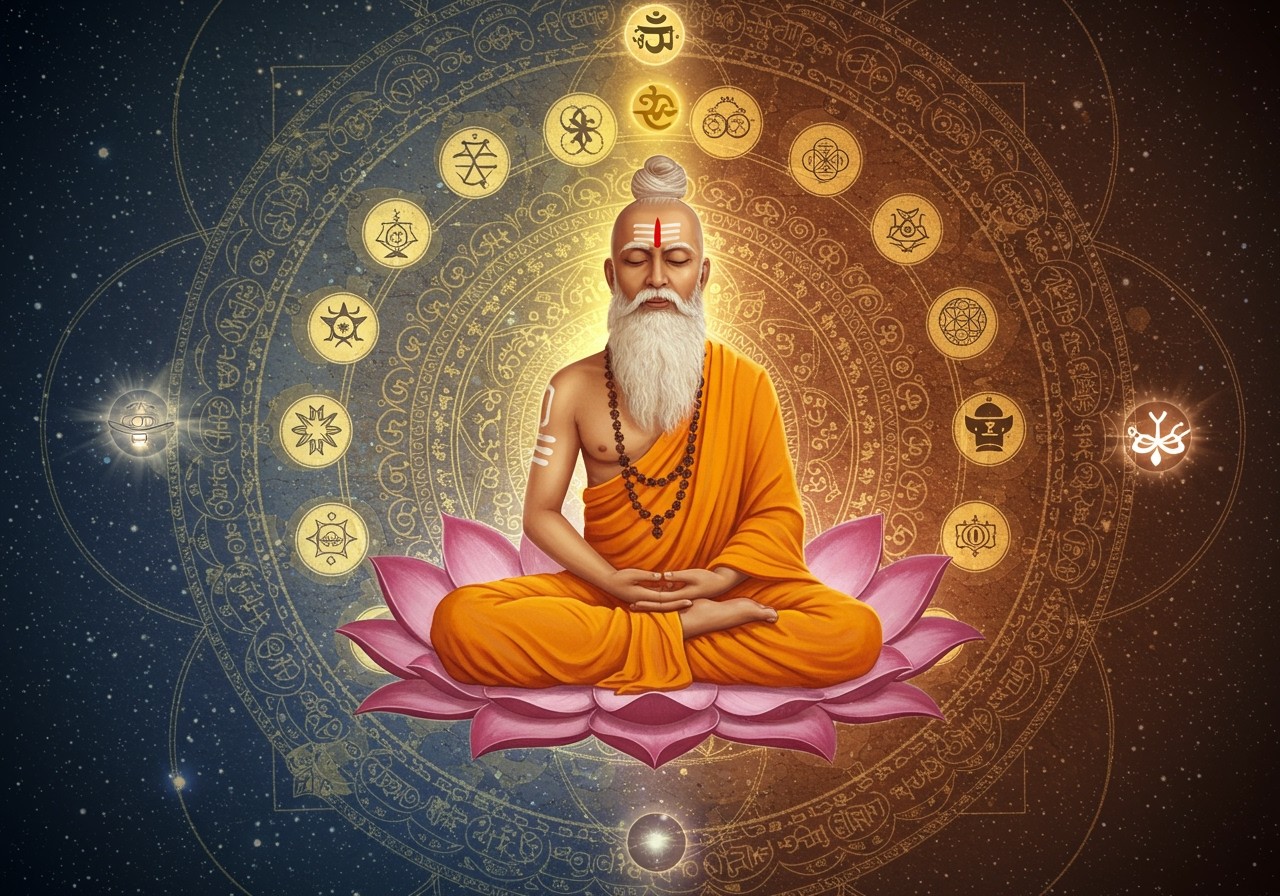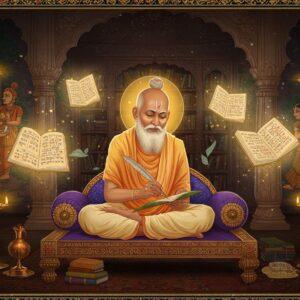
Delving into the ancient roots of Samkhya Philosophy can offer profound insights into Indian spirituality and thought. This philosophy, one of the six orthodox schools of Hindu philosophy, significantly influences how many Indians who cherish tradition perceive reality. The convenience of online platforms makes accessing this knowledge easier, blending traditional wisdom with modern life. For those seeking a deeper understanding of their spiritual heritage, exploring Samkhya can be an enriching experience.
What is Samkhya Philosophy?
Samkhya Philosophy is a dualistic system exploring the relationship between Purusha (consciousness) and Prakriti (matter). It explains the universe’s evolution through the interaction of these two fundamental elements. The 25 Tattvas (principles) are central to Samkhya and define its cosmology. This philosophy identifies Avidya (ignorance) as a root cause of human suffering and proposes a path to liberation through knowledge and understanding. To enhance your understanding of this ancient wisdom, explore resources like Connecting With Your Inner Self: A Hindu Philosophy Guide.
Deep Dive into Samkhya Philosophy
Samkhya, sometimes spelled Sankhya, is a captivating school of Hindu philosophy. It distinguishes itself with its dualistic perspective, viewing the world as an interplay between two independent principles: Prakriti and Purusha. This ancient wisdom holds valuable insights for those who value tradition and seek a deeper understanding of existence. Learn more about Hindu philosophy by exploring articles like Dharma and Karma in Hinduism Explained.
The Interplay of Prakriti and Purusha
In Samkhya, Prakriti represents nature or matter. It encompasses everything from the physical world around us to the thoughts and emotions within us. It is characterized by three inherent qualities known as Gunas: Sattva (purity, goodness), Rajas (passion, activity), and Tamas (inertia, darkness). These Gunas shape our perceptions and experiences of the world. Prakriti, though unconscious, is the dynamic force behind the manifest world.
Purusha, on the other hand, symbolizes pure consciousness or spirit. It is the silent witness, observing the activities of Prakriti without being affected by them. Each individual possesses a unique Purusha, distinct yet sharing a common essence. Purusha is the source of awareness and understanding.
Key Aspects of Samkhya
- Dualism: Samkhya’s core principle is the coexistence and interplay of matter (Prakriti) and spirit (Purusha). Understanding their distinct roles and relationship is essential to gaining wisdom. This dualism forms the foundation of Samkhya’s understanding of reality.
- Liberation: Samkhya views the pursuit of liberation (moksha) as a natural human aspiration. It identifies ignorance (Avidya) as the root cause of suffering and bondage. By realizing the fundamental difference between Prakriti and Purusha, one can achieve liberation from the cycle of birth and death. This liberation is not a physical escape but a state of enlightened understanding.
- Causality: Samkhya emphasizes the importance of causality as a fundamental principle for understanding the universe. It posits that every effect has a cause and that understanding these causal relationships is crucial to gaining knowledge. This systematic approach provides a framework for analyzing and comprehending the complexities of life.
- Atheistic Approach: Distinct from many other philosophical systems, Samkhya does not posit the existence of a creator God. It explains the universe’s existence and evolution through the interaction of Prakriti and Purusha, considering them sufficient for explaining reality. This perspective sets Samkhya apart in its approach to understanding existence.
Influence on Modern Thought
Samkhya’s influence extends beyond ancient times, impacting Hindu ethics and offering valuable insights for contemporary life. It has relevance in modern psychology, providing tools for understanding consciousness and addressing challenges such as stress and anxiety. By systematically categorizing and analyzing the components of life, Samkhya provides a framework for understanding consciousness and navigating the complexities of existence. Poojn.in offers a variety of products for stress relief and mindful living, including incense sticks and meditation mats. These tools can complement your exploration of Samkhya and enhance your journey of self-discovery.
Embracing Samkhya in Daily Life
Samkhya’s wisdom extends beyond theoretical understanding; it offers practical guidance for daily living. By appreciating the interplay of Prakriti and Purusha, we can gain a deeper understanding of our experiences and emotions. This awareness equips us to navigate life’s challenges with greater clarity and composure. Explore the diverse traditions of Hinduism through resources like Hinduism’s Global Reach: A Look at Its Diverse Traditions.
Integrating Samkhya into our daily routines can foster a sense of balance between the material and spiritual realms. This integration can manifest in various forms, from meditative practices and mindful living to cultivating an appreciation for the beauty of the natural world. Find beautiful Murtis for your meditation space at Poojn.in.
FAQs on Samkhya Philosophy
What is the core principle of Samkhya Philosophy? Samkhya Philosophy revolves around the dualism of consciousness (Purusha) and matter (Prakriti).
Who is considered the founder of Samkhya Philosophy? Sage Kapila is traditionally recognized as the founder of this insightful system.
How does Samkhya view liberation? Samkhya sees liberation (moksha) as freedom from suffering, achieved through understanding the distinction between Purusha and Prakriti.
What sets Samkhya apart from other Indian philosophies? Samkhya’s atheistic nature distinguishes it, as it doesn’t rely on the concept of a supreme deity for explaining the universe.


